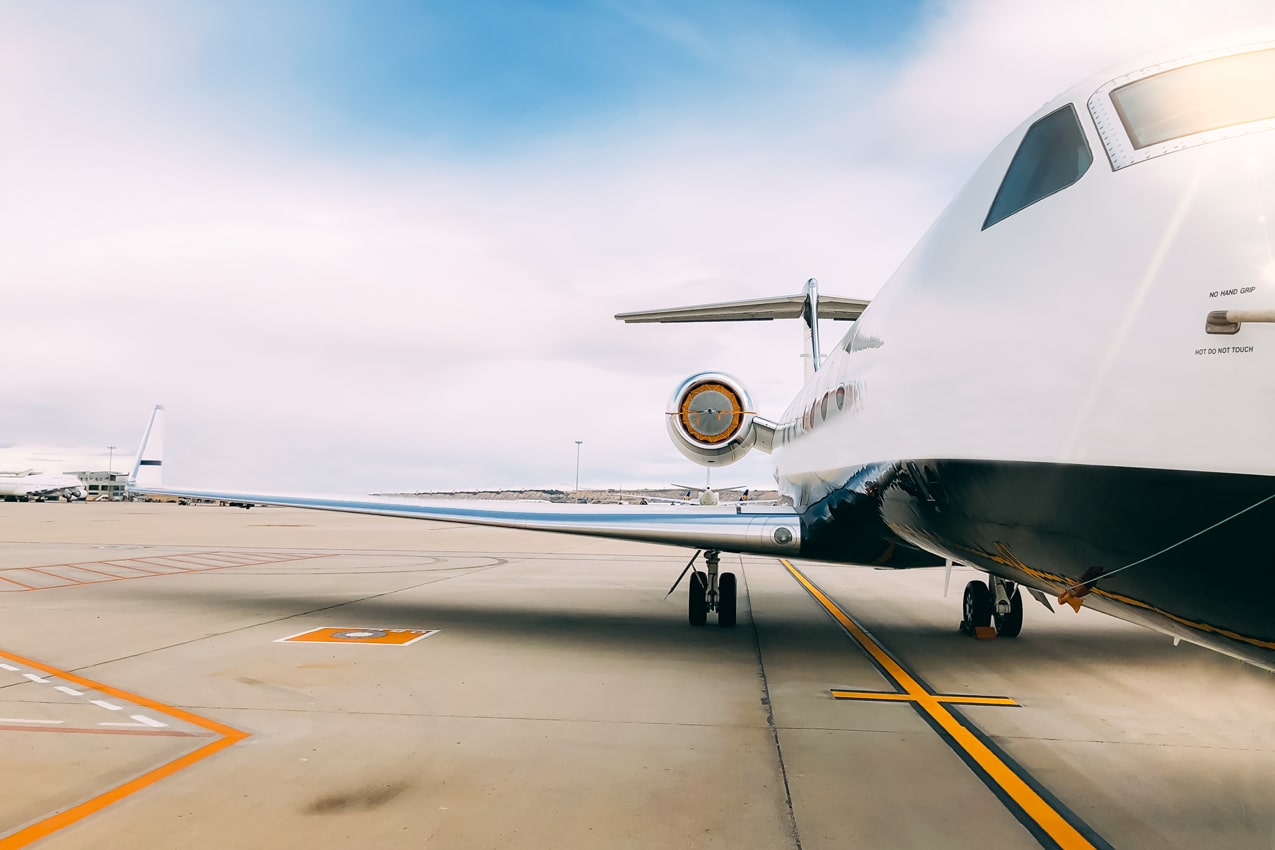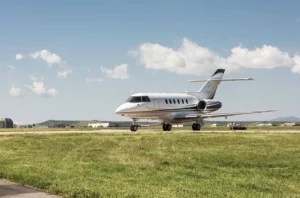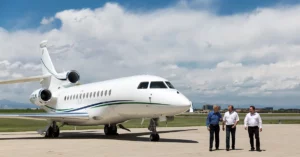Article written by Tom Wagner January 1, 2020
Private aviation and your business: Important factors to consider – What you hear on the tennis court or golf course from a friend who owns an aircraft is probably not true.
Let’s begin by listing a few frequently misunderstood realities regarding private aviation and aircraft
ownership:
- It’s not like buying a car.
- Tax benefits are not the reason to purchase an aircraft.
- There is not one ownership structure that will solve all issues.
- There is risk.
- Assume that charging someone for transportation is not permitted.
- Impatience will cost you money.
- Single purpose entities cannot operate an aircraft under Federal Aviation Regulation (FAR) Part 91 (General Operating and Flight Rules).
- Documentation standards are not that onerous.
Many entrepreneurs, businesses and ultra-high-net-worth individuals will consider private aviation for a vast number of tangible and intangible reasons, including:
Tangible benefits
- Travel time savings for key personnel.
- Feasibility of last minute trips without constraint of reservation availability.
- Costs of alternate transportation mode avoided.
- Enhancement of mental performance and physical endurance.
- Increased work productivity while en route.
- Transportation of company mail and cargo.
Intangible benefits
- Business opportunities missed but for the use of a business aircraft.
- Flexibility of routing and scheduling which permits more efficient use of executive time.
- Enhanced customer relations resulting from closer personal contact, faster response to problems, convenient transportation to company and industry functions, expedited services and increased marketing impact.
- Enhancement of acquisition of and retention of key personnel because executives
recognize the value of effective use of business aircraft as a powerful business tool.
- Support of corporate community service programs through selective use of
business aircraft in providing emergency services, special events and charitable
transportation.
As your analysis progresses in favor of private aviation, many important factors must be considered, such as 1) Federal Aviation Administration (FAA) rules and regulations, 2) federal income tax, 3) state and local tax, 4) financing, 5) corporate ownership structure, operating structure, and 6) overall risk and cash flow analysis. Your decision process should be multidisciplined, requiring a team of aviation experts to ensure success, whether the aircraft will be used for business purposes, only personal use or a combination of the two.
How will the aircraft be used? Initially, the anticipated usage must be considered and a best estimate of the number of hours you expect to use the plane. Where will you be flying, how frequently, what kind of weather conditions at departure and destination are expected, what’s the speed required to get to and from, and how many passengers are expected for each trip? These items will help to determine the best type of structure to consider, and
what type of aircraft is appropriate.
Next, you must consider whether to buy, lease or enter into fractional ownership. Often the determinative factor in this step will be the forecasted amount of usage. Certain rules of thumb exist but must be considered in concert with your anticipated needs. Considerations like the need for depreciation expense, desire to reduce cash outflows, length of time needed, risk tolerance on long-term valuations, and frequency of on-demand and unplanned travel will impact this decision.
Charter or own? Should charter be selected as a strategy to fulfill the need for private aviation, many options exist. Local charter providers offer reasonable pricing, yet sometimes provide limited options based upon the availability and type of aircraft found in the charter fleet. National charter providers may allow for more flexibility in aircraft selection and availability and offer fractional ownership programs, which allow you to have a direct interest in a particular type of aircraft without the full burden of ownership.
Ownership brings more flexibility but also more responsibility. Ownership requires the hiring of pilots, managing maintenance and repair needs, managing and maintaining detailed records, and determining and maintaining the location of a hangar. In addition, the initial acquisition of an aircraft is a detailed, laborious and an involved regulatory process that cannot be cut short. Purchasing an aircraft requires the following aviation experts: legal, appraiser, CPA, broker and financier. When selecting an aircraft it is critical to have the aircraft and its flight and maintenance logs fully reviewed, inspected and appraised by an experienced professional. Once the aircraft is delivered, ownership and operation proceed in the structure determined during the acquisition analysis. FAR Part 91 (noncommercial) aircraft usage is categorized in one of four ways for every single passenger of every flight leg and documented accordingly: 1) business flight, 2) business entertainment 3) personal non-entertainment flight, or 4) personal entertainment flight. Keep in mind, each category has an impact upon the deductibility of private air travel and requires strict log and corroborating documentation.
Private aviation has tremendous benefits to travelers and businesses alike. Comprehensive, thorough and detailed analysis and ongoing attention to compliance detail are necessary to maximize aviation benefits to the private aircraft consumer. Your overall decision process often requires a consulting team, your strategic copilot with expertise in the aviation industry to help you navigate the challenges and turbulent winds of federal, state and local regulatory matters. WCAT stands ready to assist you with your analysis.




